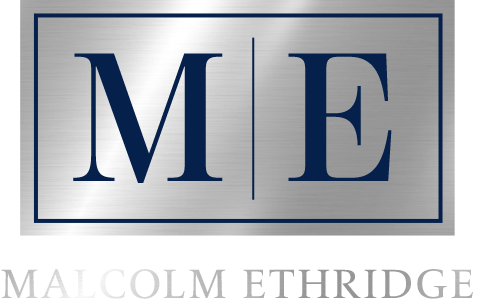Roth Conversions as an Estate Planning Tool
Despite the myriad of articles, white papers, and academic research pointing to the issue of older Americans saving too little for retirement, it is quite common for some retirees to accumulate significantly more savings than they will ever need in their lifetime. This phenomenon can be attributed to several factors, one of the most significant reasons being that retirees often spend less as they age. If addressed in advance, this can present an incredible opportunity to create a lasting financial legacy for their heirs.
Early in retirement, individuals might live more active lifestyles and have higher expenses, such as travel and leisure. However, as they move into later retirement years, their spending habits tend to change, particularly when it comes to discretionary spending. Retirees who have diligently saved and invested throughout their working years may resist the idea of spending their nest egg and only do so with extreme caution.
According to Yahoo Finance, as of June 2023 approximately 10% of America’s retirees have accumulated a retirement nest egg of $1 million or more. Unsurprisingly, many of these retirees will find themselves in the fortunate position of having savings that far exceed their lifetime spending needs.
In such cases, there is an often-overlooked strategy that can maximize the financial legacy retirees will one day leave to their heirs: Roth conversions. While Roth conversions are typically not considered an estate planning tool, they present older retirees with a tax-efficient way to hand down assets to their children and grandchildren.
A Roth conversion involves moving funds from a traditional – or pre-tax – retirement account, such as a traditional Individual Retirement Account (IRA) or 401(k), into a Roth IRA. The key distinction between the two lies in their tax treatment. Contributions to traditional accounts are tax-deductible upfront but subject to taxes upon withdrawal, while Roth accounts are funded with after-tax dollars and offer tax-free withdrawals in retirement.
While the conversion triggers a tax liability, the advantages down the line can far outweigh the initial cost, particularly for those with substantial retirement savings. By making partial Roth conversions annually and paying any required taxes at a lower rate as a retiree, you are essentially prepaying the “inheritance tax” that your heirs would otherwise be responsible for down the road.
By using Roth conversions rather than outright gifting the dollars to beneficiaries, the account owner is able to maintain control of the asset should they ever need those dollars for an unexpected medical procedure, large home repairs, or some other major expense. And by making pre-planned systematic conversions over time instead of all at once, you lessen the impact of the conversion on Medicare premiums and the taxation of Social Security benefits.
Traditional IRA and 401(k) savings are subject to Required Minimum Distributions (RMDs) when the account owner reaches age 73. This means that by that age, as mandated by Congress, those with money in these pre-tax accounts must begin withdrawing from them annually.
Roth accounts, however, are not subject to RMDs during the owner's lifetime. Moreover, when a Roth IRA is passed on to its heirs, they will not owe any income tax on withdrawals provided the account has been open for at least five years. This allows the funds to potentially grow tax-free for a longer period, further enhancing the benefits to heirs so long as certain rules are followed.
This can be a significant advantage if you have heirs who are already in a high tax bracket. In fact, IRA beneficiaries with high salaries run the risk of inheriting taxable income while they are in their peak earning years, thus giving away a significant portion of their inheritance to the IRS.
While Roth conversions offer numerous benefits, they are not for everyone. The decision to convert should be based on a careful analysis of your financial situation, tax rates, and potential tax situation of your heirs.
But for older retirees who have managed to save more than they will likely spend, strategic Roth conversions can be an effective strategy to maximize the wealth passed on to the next generation. By taking advantage of the unique tax benefits offered by Roth IRAs, you can ensure that your hard-earned dollars continue to benefit your loved ones for years to come.
********************
Malcolm Ethridge, CFP® is the Managing Partner of Capital Area Planning Group based in Washington, DC. He is also the Managing Partner of Capital Area Tax Consultants.
Malcolm’s areas of expertise include retirement planning, investment portfolio development, tax planning, insurance, equity compensation and other executive benefits.
Disclosures:
The information provided is for educational and informational purposes only, does not constitute investment advice, and should not be relied upon as such. Be sure to consult with your legal advisors before taking any action that could have tax and legal consequences.
Investments in securities and insurance products are:
NOT FDIC-INSURED | NOT BANK-GUARANTEED | MAY LOSE VALUE
